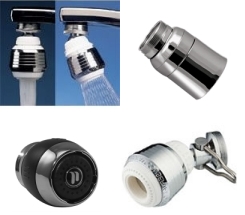
Sometimes a bubble bath just can’t compare to a steady stream of water, but getting caught up in a shower could be wasteful in more ways than you realize. Thankfully, there are many ways to save water in the shower that are simple, cheap, and beneficial environmentally as well as monetarily.
Install low flow showerheads
Get the best out of your shower (instead of it getting money out of you) by installing low flow showerheads. Earth showerheads:
- release 1.5 gallons of water per minute, compared to 2.5 GPM released by modern showerheads
- save as much as much as 30% in water usage
- come with the same (or even better) options for comfort, like massage settings and consistent water pressure
Have an older shower arm that doesn’t accept earth showerheads? Installing a showerhead adapter solves that problem.
Check for leaks
H2O conservation can be as simple as making sure your shower is free of leaks. On average, leaks can waste as much as 10,000 gallons of water per year! There can be many sources of a leak, but if the culprit is your showerhead then prevention is better than a cure. Wrapping teflon tape around the shower arm will help keep it secure and go a long way towards preventing the showerhead from leaking.
Limit shower time
One of the easiest ways to save water is to limit how much of it you use. Showering accounts for 17% of water usage in the average home, and that could be around 40 gallons of water each day! Installing a shower timer is a quick and easy way to start saving right away. The main types of shower timers out there are:
- Sand Timers – These have an hour glass shape. All you have to do is watch the sand fall. This lets you know when your 5 minutes in the shower are up. Each time you rotate the timer, just add another 5 minutes to get the total amount of time spent in the shower.
- Digital Timers – A digital shower timer takes it a step further and not only alerts you when 5 minutes are up, but it will also display how much water has been used during the shower.
Both timers can be installed by simply attaching the suction cup to the shower wall. Now we all cannot survive on 5-minute showers, but even just cutting your usual showering time in half will bring significant results on your energy and water bills.
Shower “The Navy Way”
Navy men and women only run water when it’s absolutely needed. The water is off while lathering, shampooing/conditioning, shaving. This is the most basic to conserve water that doesn’t include any added installation.
While the options listed are not the only choices, they are by far some of the most simple, energy efficient and cost-effective ways to save water.










